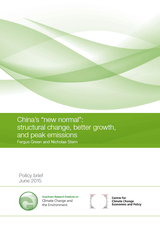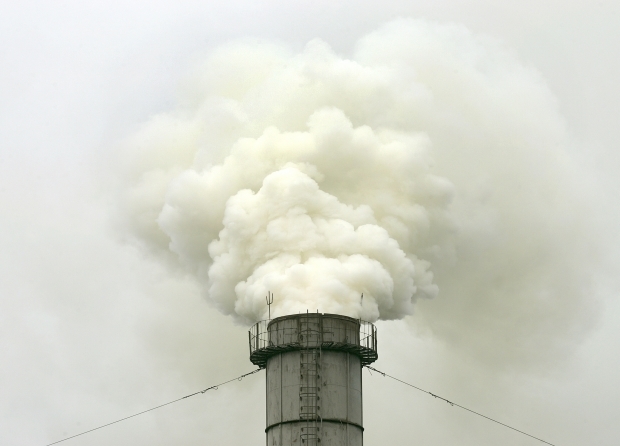China’s output of greenhouse gases could peak in 2025, five years earlier than it has promised, meaning that the world’s largest emitter may be able to quicken the pace of cuts in coming decades, according to a new paper published June 8 by the London School of Economics (LSE).
The report, which was authored by climate economists Nicolas Stern and Fergus Green for the LSE’s Grantham Institute, comes as China readies its national plan to cut emissions, a commitment that will have a strong bearing on the progress of a United Nations climate summit in December.
Reports
06.08.15
China’s “New Normal”: Structural Change, Better Growth, and Peak Emissions
China already has undertaken to peak its emissions of climate-changing gases by 2030.
But based on current policies and new measures aimed at shrinking the country’s carbon footprint and cutting the use of coal, 2025 is a more likely date when emissions might peak, and could help the world avoid runaway climate change, the report adds.
“China’s transformation has profound implications for the global economy, and greatly increases the prospects for keeping global greenhouse gas emissions within relatively safe limits,” the report said.
Climate Talks
However, for the world to avoid runaway climate change, China would need to lower its emissions sharply after greenhouse gases have peaked, rather than allowing a “plateau” that would lock the world into dangerous climate change.
For the world to have a reasonable chance of keeping a rise in average global temperatures to 2 degrees Celsius or below, other major emitters would also have to slow and reverse their output of greenhouse gases, the report added.
Almost 200 countries are in the second week of talks in the German city of Bonn aimed at smoothing a path towards a climate deal at the Paris summit.
But progress towards a workable negotiating text remains frustratingly slow because of disagreement on familiar issues such as how climate finance will be raised, the legal status of a future treaty, and which countries should shoulder the burden of long-term emissions cuts.
Omissions
China’s national climate plan, which all countries are bound to submit to the U.N., is likely to commit to carbon intensity targets—but will probably omit mention of an absolute cap and refrain from mapping out the magnitude of emissions cuts post-2030.
Countries most vulnerable to climate change want big emitters including China to agree to a review of targets every five years to “ratchet” up action on climate change.
Without such a commitment, many small island states and other poor countries may refuse to sign a deal that may be struck in the French capital just six months from now.
Leaders of the G7 on Monday attempted to build trust with countries most at risk from climate change by promising a range of measures such as ditching fossil fuels completely by the end of the century and providing insurance to the most vulnerable nations.




